History
From our founding to our future.
The above video shows images of the demolition of the church building after the 1994 Northridge earthquake (see “And the Walls Came Tumbling Down” below) and the construction of the current church campus. Interspersed are images of Emersonians before, during, and after the construction in no particular order.
Thanks to Philip Kuretsky for producing it.
A telling of Emerson’s history by Irwin Kaufman and Spike Dolomite Ward.
The founding group of five families, who had a strong desire for a religious education (RE) program and a concern for social justice issues at the Van Nuys Fellowship, started meeting in 1954. They became recognized as the Emerson Unitarian Fellowship two years later.
Emerson has had a tradition of social action throughout its history even while overcoming adversities such as the bombing of the minister’s home, the arson of its first church building, and the earthquake destruction of its next church building.
In the start-up period, the group first met in their homes. Between 1956 and 1958, worship services were held on Sunday afternoons in various rental halls, with a minister from the Santa Monica Unitarian Church serving Emerson on a part-time basis. In 1958, to accommodate strong membership growth, services were switched to Sunday mornings and Emerson had to hire another part-time minister.
With financial support from the Unitarian Universalist Association (UUA), Emerson called Reverend Brooks Walker as its first full-time minister for the 1960-65 period. Rapid growth occurred, requiring the additional full-time rental of an upstairs hall in the Canoga Park area to use for children’s religious education, church meetings, and public forums.
The bombing of Reverend Walker’s home two years into his ministry while he was speaking against right-wing extremism at a public meeting did not deter membership growth. A year later, following a successful building fund drive, loans were obtained to purchase nearby commercial buildings at 7121 Owensmouth Avenue, two blocks south of our current facility.
With the aid of much volunteer work, this sanctuary and its adjacent classroom building were renovated. At this time Emerson had about 125 family units, and 200 children in the religious education programs. The growing number of families with children attending Sunday morning services required Emerson to hire its first part-time director of religious education. Social justice activities included support of the United Farm Workers, the San Fernando Valley Fair Housing Council, and providing the initial classroom for a pre-school, which became an early Head Start school. Also, the minister and the RE director represented Emerson in the civil rights march in Selma, Alabama.
Emerson experienced considerable turmoil in early 1966 when the congregation did not elect as its new minister the candidate selected by their pulpit committee. Later that year, Emerson called the Reverend Francis Ricker to serve as its minister for the next two years. After his retirement in 1969, Reverend Ricker was named Minister Emeritus of Emerson. The church continued presenting public affairs forums and Farm Workers programs, as well as a series of classic films and concerts. The Emerson drama group was founded, and began its many years of presentations to the church, including worship services.
The congregation called the Reverend Robert Kaufmann as minister in 1969. Reverend Kaufmann served for a period of four years during which time he revitalized Emerson with his provocative sermons and leadership. However, after a year into his ministry the church sanctuary was the target of an arson attack that severely damaged the interior and the roof. The arson occurred the night before the first of two pro-and-con public forums on Cuba. To add insult to injury, the fire started with the aid of Reverend Kaufmann’s sermons under a recently purchased piano.
For several months Emerson held worship services at Temple Beth Kodesh, until an arrangement was made to exchange our fire-damaged property for the essentially abandoned fifty-year-old Methodist church at 7304 Jordan Avenue.
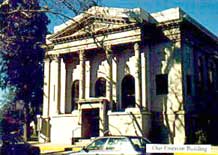 The Methodist church had the advantage of a much larger auditorium, more land, and a non-commercial location, but it needed extensive work. With insurance money, new UUA financing, and massive volunteer work, this site was made usable in 1970 and the repaired building was dedicated a year later.
The Methodist church had the advantage of a much larger auditorium, more land, and a non-commercial location, but it needed extensive work. With insurance money, new UUA financing, and massive volunteer work, this site was made usable in 1970 and the repaired building was dedicated a year later.
Membership peaked at 120 families with Reverend Kaufmann’s guidance. Some prominent worship service guests included Jane Fonda, Gore Vidal who spoke about the pet rock craze, and a debate about black equality in which William Shockley participated.
The Vietnam War spurred Reverend Kaufmann to initiate a conscientious objector program for Emerson teens who had reservations about the war effort.
The church auditorium became the scene of many other programs, including plays, concert readings, and musical presentations.
In 1974 Emerson called the Reverend Paul L’Herrou as minister, who he served for five years. Many social justice activities received Emerson’s attention during this time period, including public forums on school busing and gun control. The former led to Emerson’s support of the Council for Peace and Equality in Education. The latter led to a gun control resolution adopted at the UUA General Assembly (GA). Reverend L’Herrou became the first UU minister to become president of the San Fernando Valley Interfaith Council. He is credited with authoring “Respect for the interdependent web of all existence, of which we are a part” to the UU Principles.
Emerson’s playful side flourished during Reverend L’Herrou’s tenure as minister as well. Increased participation in music and drama programs resulted in presentations of full-length plays and operas, complete with sets that had runs of several weekends. Members and friends of Emerson offered musical programs, concert readings, and canvass dinner skits containing parodies of popular folk songs, hymns and the works of Gilbert and Sullivan written by Edith “Bunny” Ricker, wife of Reverend Frank Ricker. Membership remained at the level of 90-100 families.
In order to refurbish the building and obtain use of a paved parking lot, an unused one-third of Emerson’s property was sold to the city for conversion to the senior citizen center parking lot for shared use with the church. Friends and members of Emerson gathered on that property for many months on Friday nights for a rousing game of volley ball while the less active souls remained in the social hall playing ping-pong, board games, listening to music while they lounged in bean bag chairs in a room near the fireplace.
Emerson called the Reverend Silvio Nardoni, who started as minister in the fall of Eighty-one and continued to serve until 1985. A coming-of-age program for teens was started, and the Emerson Seder service (first held in 1978) was revised and became one of the most popular celebrations. The main social justice activities were promoting the freeze of nuclear weapons tests and helping to provide sanctuary to Salvadoran refugees.
Emerson gained some notoriety when Reverend Nardoni debated Reverend Jimmy Swaggert on local television.
A year after Reverend Nardoni left, Emerson had a fire of a different sort–a mortgage-burning ceremony to celebrate its pay-off. That same year the American Civil Liberties Union honored Emerson for its Salvadorian refugee sanctuary program.
At the end of the year Emerson called the Reverend Richard Davis as its new minister. He started in early 1987 and served until the end of 1992. Reverend Davis inaugurated paraministry training to help prepare members to act as an effective caring committee for the church. He also initiated the formation of the Help Our Homeless Project (HOHP) by the San Fernando Valley Interfaith Council, and Emerson continues to be an active participant in HOHP. Emerson became and remains an active participant in the West Valley Food Pantry. Also, several new church activities got their start, including a men’s group, a book discussion group, and a music appreciation group.
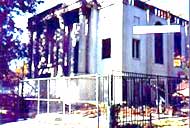 After Reverend Davis left, the Reverend Ken Brown helped the congregation work on a Decisions for Growth program, in which a major decision was made to refurbish the building. However, the Northridge earthquake of January 17, 1994, caused massive damage to the church building, although fortunately none of the 12 homeless people housed in the basement social hall were seriously hurt. The church building could not be used at all without extensive rebuilding and repairs. The pulpit committee that had been looking for a replacement for Reverend Davis soon disbanded.
After Reverend Davis left, the Reverend Ken Brown helped the congregation work on a Decisions for Growth program, in which a major decision was made to refurbish the building. However, the Northridge earthquake of January 17, 1994, caused massive damage to the church building, although fortunately none of the 12 homeless people housed in the basement social hall were seriously hurt. The church building could not be used at all without extensive rebuilding and repairs. The pulpit committee that had been looking for a replacement for Reverend Davis soon disbanded.
Emerson once again found temporary meeting places for worship services and religious education programs. Initially this was the Temple Beth Kodesh, and then the Senior Citizens Hall next to our property. Trailers were installed on the Emerson grounds for offices and the RE program. Visiting ministers frequently filled the pulpit on Sunday mornings. After a year of fact-finding, options analysis, long-range goals discussions, and many arguments, the congregation voted overwhelmingly to tear down the old building and put up new buildings on the same site. A successful building fund campaign conducted in 1995, provided funds for a new sanctuary/social hall with adjacent buildings for offices and classrooms suitable for both RE and a new pre-school. Emerson moved everything off its property to rental space at the Masonic Lodge and nearby offices usable for worship, RE, and administrative work, while a part-time contract minister served us on Sunday mornings until the completion of our new handicap-accessible quarters.
Using a Small Business Administration loan, construction started in the spring of 1996, with an estimated 6-month completion date. Many Emerson programs had been curtailed, but in 1996 the church was awarded status as a Welcoming Congregation.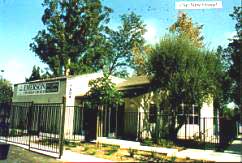
Meanwhile, the UUA sought an extension minister for Emerson, as promised in 1994. Two years after the earthquake the congregation approved the selection of the Reverend Gail Geisenhainer, who became our extension minister in the fall of ninety-six. A few months later the new buildings were completed, furnished and opened for both the church and the new pre-school. Church attendance and membership grew rapidly, with many new children in the RE programs. The pre-school soon became multi-ethnic, and an Emerson scholarship fund was established to provide aid for poorer families in the neighborhood. Reverend Geisenhainer led programs on church structure and management, growth, and planning, as well as encouraging more participation in the UUA district and national meetings. Emerson’s teen group worked at the 1997 UUA General Assembly (GA), and many more adults attended GA from 1997 onward. Emerson Unitarian Universalist Church became our official name during Reverend Geisenhainer’s ministry.
A long-range planning committee began extensive studies with the church membership, via focus groups and then sub-committee studies on facilities and on lifespan RE. New evening programs started such as “Colors of Language,” readings by authors who were not straight, white men (playwright Jose Rivera, Japanese/African American playwright Velina Hasu Houston, Nigerian poet Kunle Ajibade, African American novelist Gary Phillips, Persian Jewish American novelist/memoirist Gina Nahai) and a concert series that lasted for years.
Reverend Geisenhainer accepted the call to be a settled minister at Emerson in the fall of 2000. However, in the spring of the following year she stunned the church by giving notice of her resignation, to be effective at the end of summer.
Emerson held several congregational meetings to discuss Reverend Geisenhainer’s resignation and future plans. The board of trustees immediately appointed an interim minister, Rev. Michael Thompson.
The congregation elected a new ministerial search committee shortly afterward and chose the Reverend Anne Felton Hines to serve as Emerson’s new minister after a search process that lasted eight months. At a special congregational meeting on 21 April 2002, Emerson members chose Reverend Hines to be our eighth settled minister by a vote of eighty-eight to zero. Reverend Felton Hines agreed to begin her ministry in the fall of that same year. Nearly 20 years ago, Emerson became one of the first UU congregations nationally to declare itself a welcoming congregation.
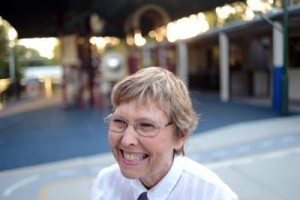 Reverend Anne Felton Hines served Emerson for a little over twelve years, the longest any minister has ever served Emerson. During her time in the pulpit, she implemented the Small Group Ministries which has grown to include 75% of our membership. Our restrooms were redesigned as unisex facilities so as not to alienate transgender members or friends of the congregation. We partnered with the Sikh and Lutheran neighbors on a couple of occasions for community events, offered free monthly art classes for low income children in the neighborhood, installed signage on the corner of the property to advertise our programs and services, and conducted a Visioning Workshop with the congregation. The Family Small Group Ministry is in the planning stages of building a Little Free Library that will be open to the neighborhood in one of our gardens. Since Sandy Hook, we have supported various gun control events. Reverend Anne spoke at the Sandy Hook Vigil at the Federal Building in December 2013 and members of Emerson have participated in various common sense gun legislation demonstrations. For Rev Anne’s 30 year anniversary in ministry, the church celebrated with a party. Rev. Anne was given a 6 month sabbatical in 2011/12. During that time, Reverend Frank Rivas was in the pulpit.
Reverend Anne Felton Hines served Emerson for a little over twelve years, the longest any minister has ever served Emerson. During her time in the pulpit, she implemented the Small Group Ministries which has grown to include 75% of our membership. Our restrooms were redesigned as unisex facilities so as not to alienate transgender members or friends of the congregation. We partnered with the Sikh and Lutheran neighbors on a couple of occasions for community events, offered free monthly art classes for low income children in the neighborhood, installed signage on the corner of the property to advertise our programs and services, and conducted a Visioning Workshop with the congregation. The Family Small Group Ministry is in the planning stages of building a Little Free Library that will be open to the neighborhood in one of our gardens. Since Sandy Hook, we have supported various gun control events. Reverend Anne spoke at the Sandy Hook Vigil at the Federal Building in December 2013 and members of Emerson have participated in various common sense gun legislation demonstrations. For Rev Anne’s 30 year anniversary in ministry, the church celebrated with a party. Rev. Anne was given a 6 month sabbatical in 2011/12. During that time, Reverend Frank Rivas was in the pulpit.
For the first time in Emerson’s history, we had an intern, Sara LaWall, for 2 years. Sarah contributed a lot to the church with her leadership, sermons, and passion for compassionate immigration reform and common sense gun legislation.
The social justice programs we were most active in were donating to the West Valley Food Pantry every week, participating in monthly peace vigils, hosting open meetings on Deferred Action policies and how to obtain drivers licenses for undocumented immigrants, organized a day for people to sign up for Covered California, supported children visiting parents in prison in the getonthebus.com program through the Emerson Social Action Alliance, and show monthly films and documentaries about social justice issues through the JustWeb group. We produced three nights of a semi professional reading of “8” by Dustin Lance Black about the Prop 8 case in California with a talk back with Paul Katami and Jeff Zarrillo, two of the four plaintiffs in the Prop 8 case (a week later the Supreme Court decided on the case). For One Billion Rising, we produced the Vagina Monologues as a fundraiser for a local domestic violence shelter. Our Immigration Justice Committee conducted a 6 week adult RE class, “Immigration as a Moral Issue,” Sarah LaWall headed the Day Laborer Street Corner Ministry where we provided coffee, pastries and comfort to day laborers as they waited for work, and supported an undocumented laborer (and his family) who lives in the neighborhood who was falsely accused of assault by his employer. We have a Head Start program on our campus that serves preschool aged children in the neighborhood.
Ever since Emmalinda MacLean came on board as our DRE in 2010, our RE programs have been exemplary. Emmalinda has a degree in theatre from UCLA and puts her expertise to good use every Sunday when she gathers the children for story time before the congregation, directing intergenerational staged performances (our holiday pageants are always outstanding), and presiding over various rituals. Her leadership with OWL and Coming of Age has elevated our reputation in Southern California as having a model RE program. Through her leadership, Emerson hosted its first Pacific Southwest District Youth Conference connecting youth with other wider faith and other UU teens in March of 2014, and another one in May of 2015.
Some of the more notable guest speakers that we have had over the past 13 years is Father Gregory Boyle, founder and director of Homeboy Industries, the nation’s largest gang intervention and re-entry program, Diane Donoghue from “Nuns on the Bus”, Christopher Loken, screenplay writer of “Fighting for Freedom”, Los Angeles Poet Laureate Luis Rodriguez, (Luis was designated as one of 50 “Unsung Heroes of Compassion” from around the world, presented by his Holiness the Dalai Lama) and music activist, Melanie DeMore.
We have a stellar music program with an outstanding choir. Three years ago we created a community outreach program that fills a void in the west San Fernando Valley – the absence of art and culture, by staging theatrical programs such as “To Begin the World Again, the Life of Thomas Paine”, “Giving Up” by Annie Abbot, and musical performances such as Angels of Flight Flute Orchestra, Roy Zimmerman, open mic nights, Kate Hutter and the LA Contemporary Dance Company, and participation in a monthly artwalk during the summer months.
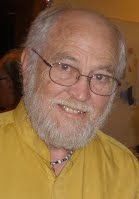 We have many active groups at Emerson. The Coming of a Certain Age group is for women going through menopause. We have a Current Events Discussion Group, Vegetarian Dining Club, Book Group, Hiking and Outing Group, Knitting Ministry, Ladies that Lunch, and Daytime Discussion Group.
We have many active groups at Emerson. The Coming of a Certain Age group is for women going through menopause. We have a Current Events Discussion Group, Vegetarian Dining Club, Book Group, Hiking and Outing Group, Knitting Ministry, Ladies that Lunch, and Daytime Discussion Group.
Rev. Anne retired in 2014. Our interim minister, Reverend Mike Young, has been with us since the fall of 2014.